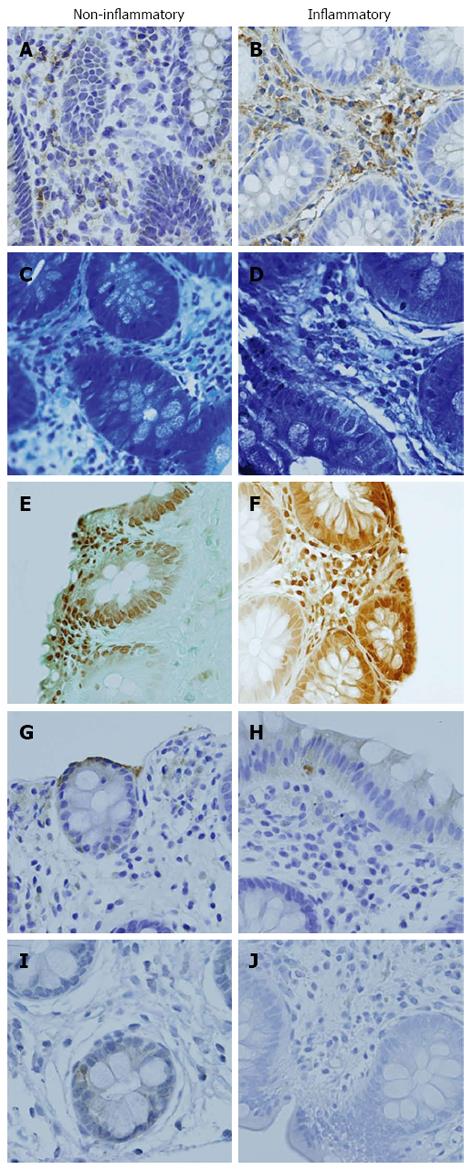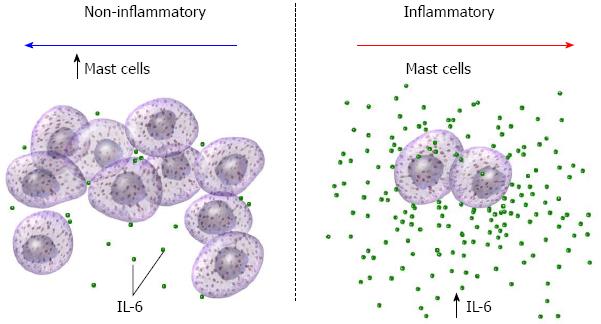Copyright
©2012 Baishideng Publishing Group Co.
World J Gastrointest Pathophysiol. Dec 15, 2012; 3(6): 102-108
Published online Dec 15, 2012. doi: 10.4291/wjgp.v3.i6.102
Published online Dec 15, 2012. doi: 10.4291/wjgp.v3.i6.102
Figure 1 Diagram of brain-gut connections in abdominal pain.
5-hydroxytryptamine (5-HT) receptors are expressed on the terminals of both extrinsic sensory neurons and enteric and transduce signals related to the chemical environment in the lumen to enteric interneurons and finally to sensory centers within the central nervous system. Mast cell maturation and degranulation in addition to local mediators [e.g., histamine, interleukin-6 (IL-6)] further enhance neuronal stimulation. The complex interactions of these molecules results in inflammation and visceral hypersensitivity.
Figure 2 Immunohistochemical staining (40 ×).
Examples of labeling of interleukin-6 (A-B), mast cells (C-D), enterochromaffin cells cells (E-F), 5-hydroxytryptamine (G-H) and substance P (I-J) in non-inflammatory and inflammatory biopsies are shown.
Figure 3 Comparison of interleukin-6 and mast cells in non-inflammatory vs inflammatory phenotypes.
Increase in interleukin-6 (IL-6) levels and mast cell degranulation during inflammation may trigger a gastrointestinal pain pathway.
- Citation: Henderson WA, Shankar R, Taylor TJ, Del Valle-Pinero AY, Kleiner DE, Kim KH, Youssef NN. Inverse relationship of interleukin-6 and mast cells in children with inflammatory and non-inflammatory abdominal pain phenotypes. World J Gastrointest Pathophysiol 2012; 3(6): 102-108
- URL: https://www.wjgnet.com/2150-5330/full/v3/i6/102.htm
- DOI: https://dx.doi.org/10.4291/wjgp.v3.i6.102















